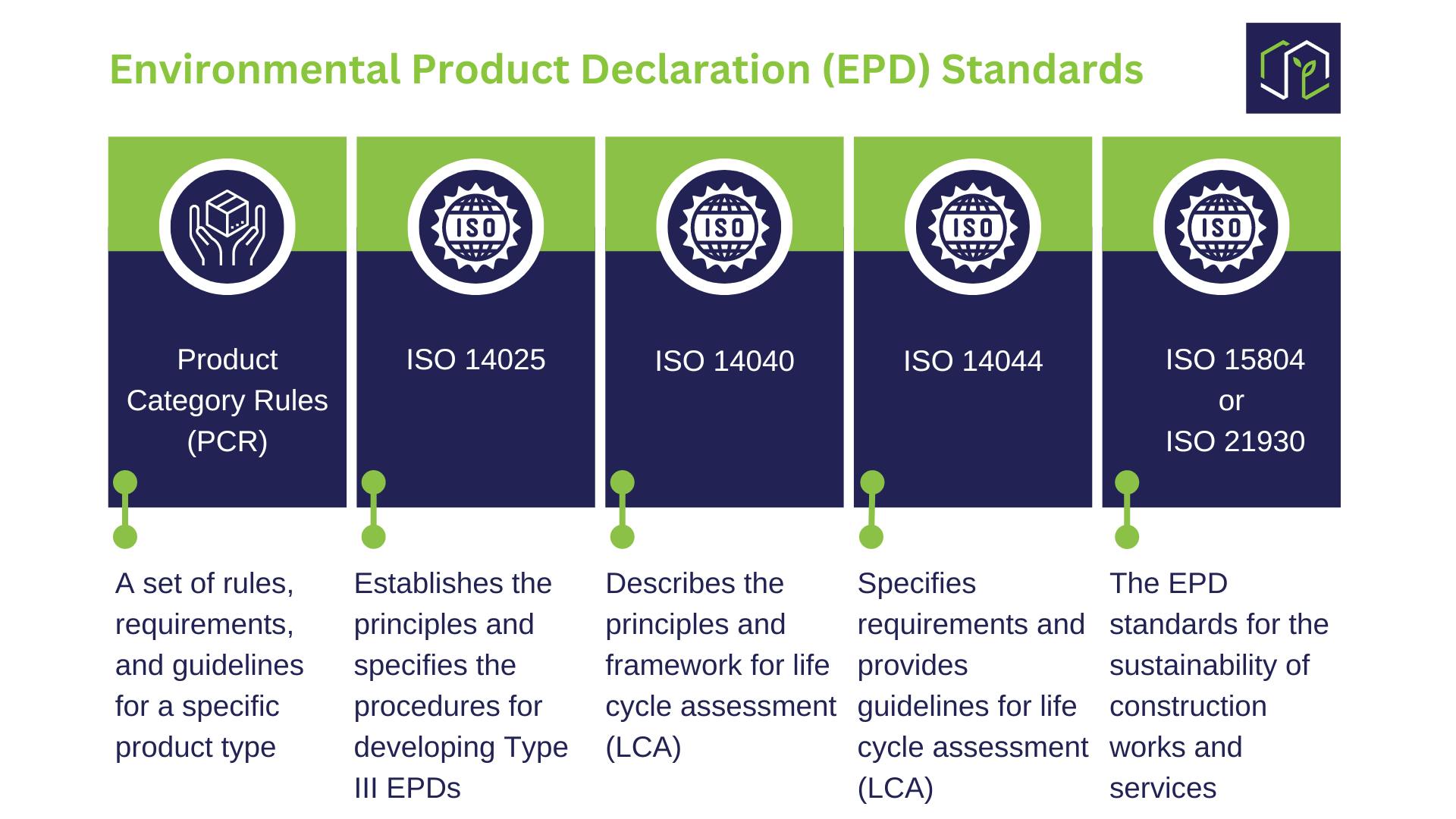Covering Embodied Carbon Series
Covering Embodied Carbon: what is an EPD?
Read Time 5 mins | Written by: Alex Bantock
TL;DR
- Environmental Product Declarations (EPDs) are verified and registered documents outlining the environmental impacts of a product based on its Product Category Rules (PCRs)
- An EPD is essentially a standardised summary report of a product’s life cycle analysis, allowing you to evaluate the environmental impact of a product before you purchase it
What are EPDs?
We’ve mentioned Environmental Product Declarations (frequently abbreviated to EPDs) before, but what exactly are they? Environmental Product Declarations are verified and registered documents outlining the environmental impacts of a product based on its Product Category Rules (PCRs). PCRs are the requirements for performing life cycle assessments (LCAs) on products within a specific category and define how to report the findings through an EPD. PCRs ensure that functionally similar products are assessed in the same way and that EPDs for products within the same Product Category can be reliably compared - PCRs essentially provide a level playing field for the comparison of products’ environmental footprints. So, basically, an EPD is a standardised summary report of a product’s life cycle analysis, allowing you to evaluate the environmental impact of a product before you purchase it. Think of it like a nutrition label on a food product, but for other products and materials. Because EPDs are based on LCAs, they will include multiple environmental impacts - such as global warming potential (GWP), ozone layer depletion potential (ODP), acidification potential (AP), etc. All of these impacts are important to consider, however, GWP (measured in kilograms of carbon dioxide equivalents1 or kgCO2eq.) is the most frequently used proxy for choosing construction products and materials (like calories are most frequently considered in food nutrition labels) and is often referred to as the ‘carbon footprint’.

The different types of EPDs
The are three types of EPDs:
- Product-Specific Declaration
- Industry-Wide (Generic) EPD
- Product-Specific Type III EPD
The Product-Specific Declarations are for industries without established PCRs and are not typically verified. However, they must conform to ISO 14044. Industry-Wide (Generic) EPDs cover a broad product type, such as concrete or timber, and can be used as a weighted industry average; whilst the Product-Specific Type III EPDs cover a single product from a specific manufacturer. Both of these EPD types must follow specific PCRs, conform to all ISO standards (above), and be verified by a third party. Type III EPDs are the most common and are the best option if you have an idea of the manufacturer you want to use. Industry-Wide (Generic) EPDs, however, are a valuable comparison point when you want to determine percentage impact reduction compared to industry averages.
How to use EPDs
Using EPDs is very important when it comes to building sustainable and low-carbon homes. Many green rating systems and some regulations also suggest/require the use of EPDs for certification and approval. Here’s an example of how one could use an EPD to make simple design and building decisions: you are in the process of designing your new home and want to limit the amount of embodied carbon in the building products and materials you use. You know that insulating your home will result in operational energy savings in the future, however, you want to ensure that you consider the alternatives before accepting the builder’s suggestion of using Extruded Polystyrene (XPS) Foam insulation. You find EPDs from three local insulation manufacturers (for simplicity we will ignore product thicknesses and densities):
- XPS insulation: GWP for [A1-A5] = 9.4 kgCO2eq. per 1m2
- Rockwool insulation: GWP for [A1-A5] = 1.3 kgCO2eq. per 1m2
- Glasswool insulation: GWP for [A1-A5] = 3.21 kgCO2eq. per 1m2
From what you can see, rockwool insulation would be the best option out of the three you initially chose, as it has the lowest carbon footprint. Whilst rockwool is by no means the most ‘environmentally friendly’ option, it is important to see here that from the quick research it took to find the three EPDs you could save 8.1 kgCO2eq. per 1m2! Also, note that the GWP values are stated per m2. This is called a declared or functional unit and usually states a quantity for reference2. Although we have made some assumptions about product thickness, these three products can be easily compared because they share the same declared units.
Comparison gets a little trickier when you want to compare products with different declared/functional units. For example, an EPD for blown cellulose insulation, which is a low-carbon insulation material, shows a GWP of [A1-A5] = 0.23 kgCO2eq. per 1kg. This GWP cannot be directly compared with those of the other three insulation materials because it has a different declared unit (it is measured per kg not per m2). Nevertheless, EPDs provide all of the values and units you will need for conversion - like here using the product densities to convert all of the values to per kg. If you find this difficult to wrap your head around, don’t worry! There are multiple database-driven LCA software tools out there that automatically use EPD information in their calculations. Want to find out how Preoptima can help you with all of the EPDs headaches? Contact us at info@preoptima.com or explore the various resources on our website.
In all, EPDs form an important constituent of sustainable and low-carbon construction and are becoming an increasingly integral part of certification systems and regulatory requirements. As the pressure rises for manufacturers to provide EPDs, they will be forced to truly consider the environmental impacts of their products as an important determinant of demand (not only price, credibility, etc.). This will hopefully encourage manufacturers to produce more sustainable products that match customer expectations - a round of applause for EPDs!
[FOOTNOTE 1] In simple terms, carbon dioxide equivalents is a single metric used to represent the global warming impact of greenhouse gases - instead of noting them separately, they are weighted in a single value
[FOOTNOTE 2] In short, a declared unit is used when the function of the product cannot be known or the whole lifecycle was not covered in the LCA. A functional unit is used when the end-use function of the product is known. E.g. the end use for a carpet is more likely to be known than the end use for steel.
We'd love to hear from you!

